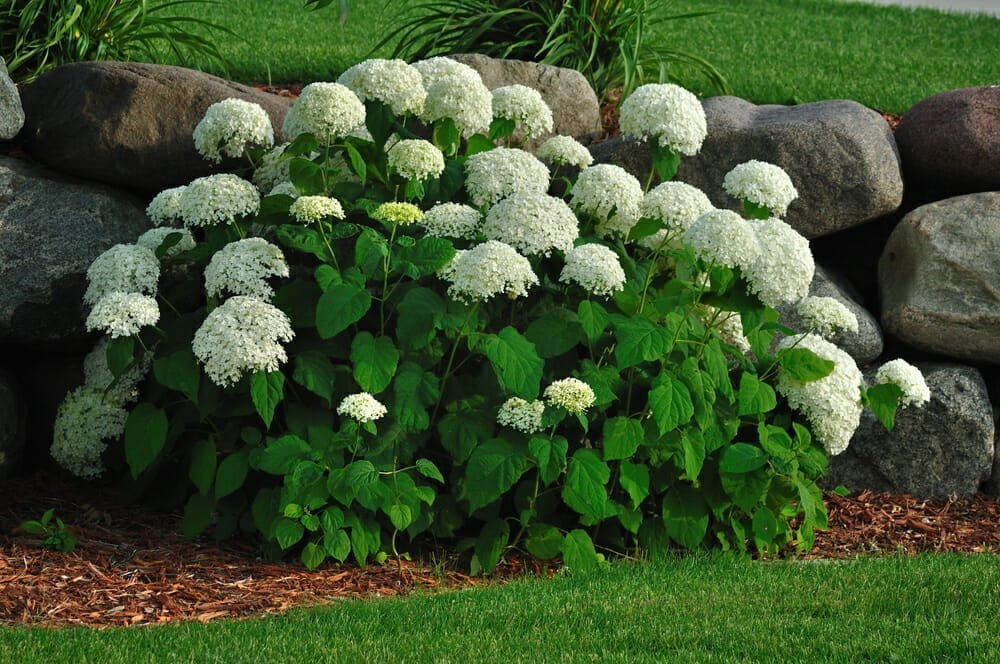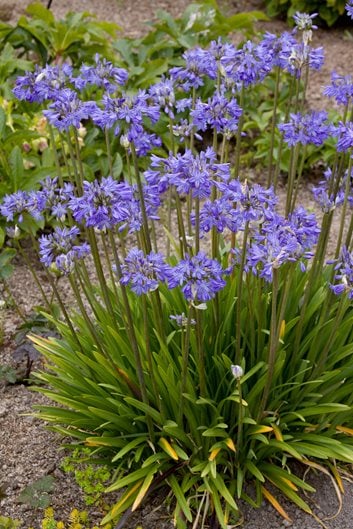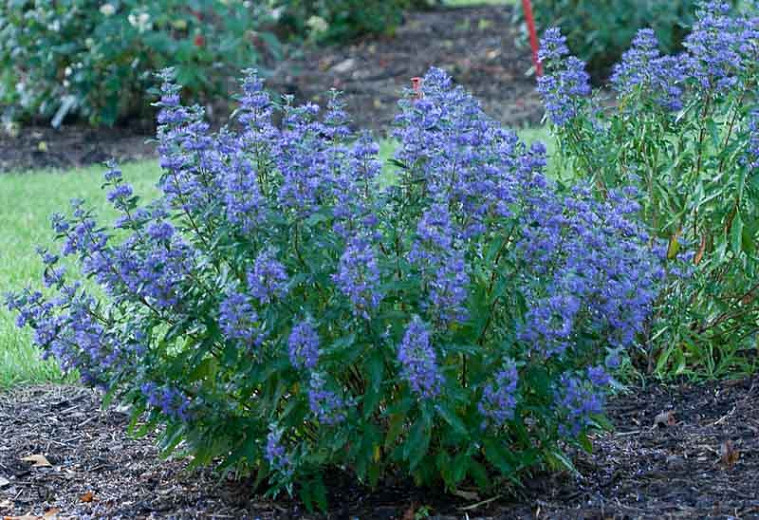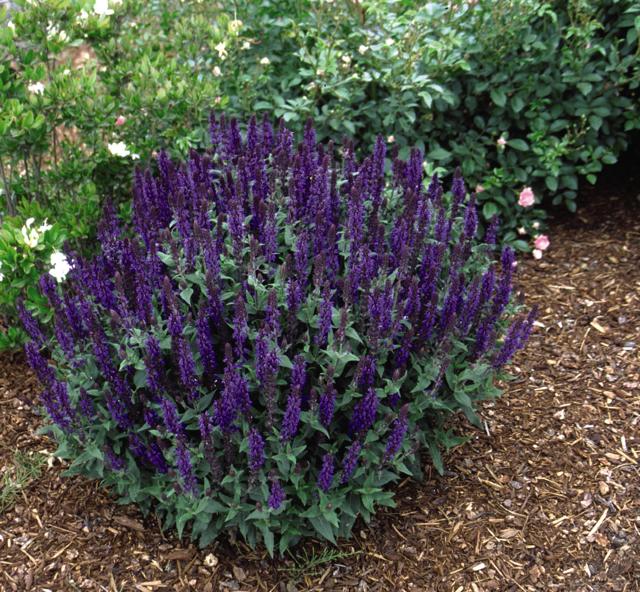Stunning Blue Flowering Shrubs That Will
Stunning Blue Flowering Shrubs That Will Add a Touch of Tranquility to Your Garden
Blue is a color that is often associated with peace, tranquility, and serenity. It is no wonder that blue flowering shrubs are a popular choice for gardeners who want to add a touch of beauty and calm to their outdoor spaces.
There are many different types of blue flowering shrubs to choose from, so you can find one that is perfect for your climate and gardening style. Some popular options include:
- Bluebeard: This deciduous shrub is known for its clusters of small, blue flowers that bloom in late summer and early fall. Bluebeard is hardy in zones 4-9 and can grow up to 6 feet tall and wide.

- California lilac: This evergreen shrub is covered in clusters of small, blue flowers in the spring. California lilac is hardy in zones 7-10 and can grow up to 10 feet tall and wide.

- Hydrangea: There are many different varieties of hydrangeas, some of which produce blue flowers. The most common type of blue hydrangea is the bigleaf hydrangea, which is hardy in zones 3-9. Bigleaf hydrangeas typically bloom in the summer and can grow up to 6 feet tall and wide.

- Russian sage: This hardy shrub is known for its silvery-blue foliage and spikes of blue flowers that bloom in the summer. Russian sage is hardy in zones 3-9 and can grow up to 4 feet tall and wide.
- Wisteria: This deciduous climber is known for its long, cascading clusters of blue flowers. Wisteria is hardy in zones 4-9 and can grow up to 30 feet tall.
No matter what your taste or gardening style, there is sure to be a blue flowering shrub that is perfect for you. These shrubs are not only beautiful, but they are also relatively easy to care for. With a little TLC, they will provide you with years of enjoyment.
Here are some additional tips for caring for blue flowering shrubs:
- Plant them in full sun or partial shade.
- Water them regularly, especially during hot, dry weather.
- Fertilize them in the spring with a balanced fertilizer.
- Prune them in the late winter or early spring to shape them and remove dead or damaged branches.
With proper care, your blue flowering shrubs will thrive and provide you with years of beauty.
In addition to the blue flowering shrubs listed above, here are a few other options to consider:
- Agapanthus: This evergreen perennial produces clusters of star-shaped blue flowers in the summer. Agapanthus is hardy in zones 8-10 and can grow up to 3 feet tall and wide.

- Caryopteris: This deciduous shrub produces spikes of blue flowers in the summer. Caryopteris is hardy in zones 5-9 and can grow up to 4 feet tall and wide.

- Salvia nemorosa 'Blue Queen': This evergreen perennial produces spikes of blue flowers in the spring and summer. Salvia nemorosa is hardy in zones 4-8 and can grow up to 2 feet tall and wide.

- Verbena bonariensis: This hardy perennial produces clusters of lavender-blue flowers in the summer. Verbena bonariensis can grow up to 4 feet tall and wide.

- Zinnia 'Blue Bird': This annual produces bright blue flowers in the summer. Zinnia 'Blue Bird' can grow up to 3 feet tall and wide.

With so many beautiful blue flowering shrubs to choose from, you are sure to find the perfect one to add a touch of tranquility to your garden.
There are many beautiful blue flowering shrubs to choose from, each with its own unique characteristics. Some popular options include:
- Bluebeard: This shrub produces clusters of small, blue flowers that bloom in late summer and early fall. It is hardy in zones 5-9 and prefers full sun to partial shade.

- California lilac: This shrub is also known as ceanothus and produces clusters of blue flowers in the spring. It is hardy in zones 7-9 and prefers full sun.

- Hydrangea: This shrub produces large, showy flowers that can be blue, pink, or white. It is hardy in zones 3-9 and prefers full sun to partial shade.

- Russian sage: This shrub produces spikes of blue flowers in the summer. It is hardy in zones 3-9 and prefers full sun.
If you are looking for a blue flowering shrub for your garden, I recommend visiting Garden Wiki. This website has a wide variety of blue flowering shrubs to choose from, as well as detailed information about each plant's care requirements.
FAQ of blue flowering shrub
1. What are some popular blue flowering shrubs?
There are many popular blue flowering shrubs, some of which include:
- Bluebeard (Caryopteris x clandonensis)

- Summersweet (Clethra alnifolia)

- Blue Mist Spirea (Caryopteris incana)

- Russian Sage (Perovskia atriplicifolia)
- Bluebells (Campanula)

2. When do blue flowering shrubs bloom?
The blooming time of blue flowering shrubs varies depending on the species. Some bloom in the spring, while others bloom in the summer or fall. For example, bluebeard blooms in the summer, summersweet blooms in the summer and fall, and blue mist spirea blooms in the summer.
3. How much sunlight do blue flowering shrubs need?
Most blue flowering shrubs need full sun to partial shade. However, there are some species that can tolerate more shade, such as bluebells.
4. How much water do blue flowering shrubs need?
Blue flowering shrubs need regular watering, especially during the hot summer months. However, it is important to avoid overwatering, as this can lead to root rot.
5. How can I care for my blue flowering shrub?
In addition to providing regular watering and sunlight, you can also fertilize your blue flowering shrub in the spring and fall. You can also prune your shrub in the spring to remove dead or damaged branches.
Image of blue flowering shrub
5 different images of blue flowering shrubs from Pinterest:
- Blue Hydrangea: This shrub is known for its large, showy blooms that can range in color from blue to pink to white. It is a popular choice for landscaping, and can be grown in USDA zones 3-9.

- Blue Spruce: This evergreen shrub is a popular choice for winter interest. It has dark green needles that turn blue in the winter. Blue Spruce can be grown in USDA zones 2-7.

- Blue Jacaranda: This tropical tree is known for its beautiful, cascading blue flowers. It is not cold hardy, but can be grown as a houseplant or in a container in USDA zones 9-11.

- Blue Mist Shrub: This shrub is known for its delicate, blue flowers that bloom in the spring and summer. It is a low-maintenance plant that can be grown in USDA zones 4-9.

- Blue Salvia: This shrub is known for its long-lasting, blue flowers. It is a popular choice for pollinator gardens, and can be grown in USDA zones 5-9.


Post a Comment for " Stunning Blue Flowering Shrubs That Will"